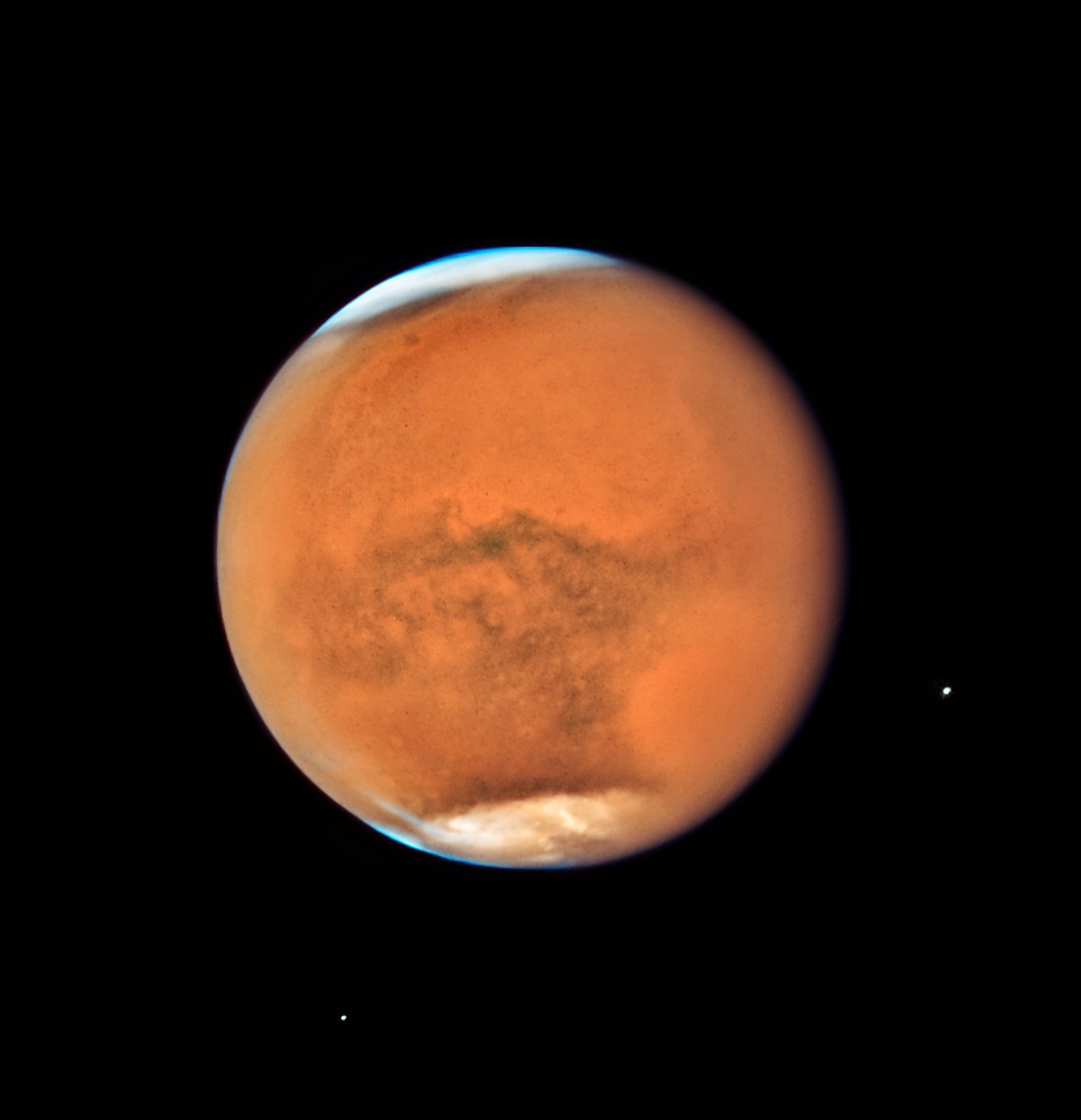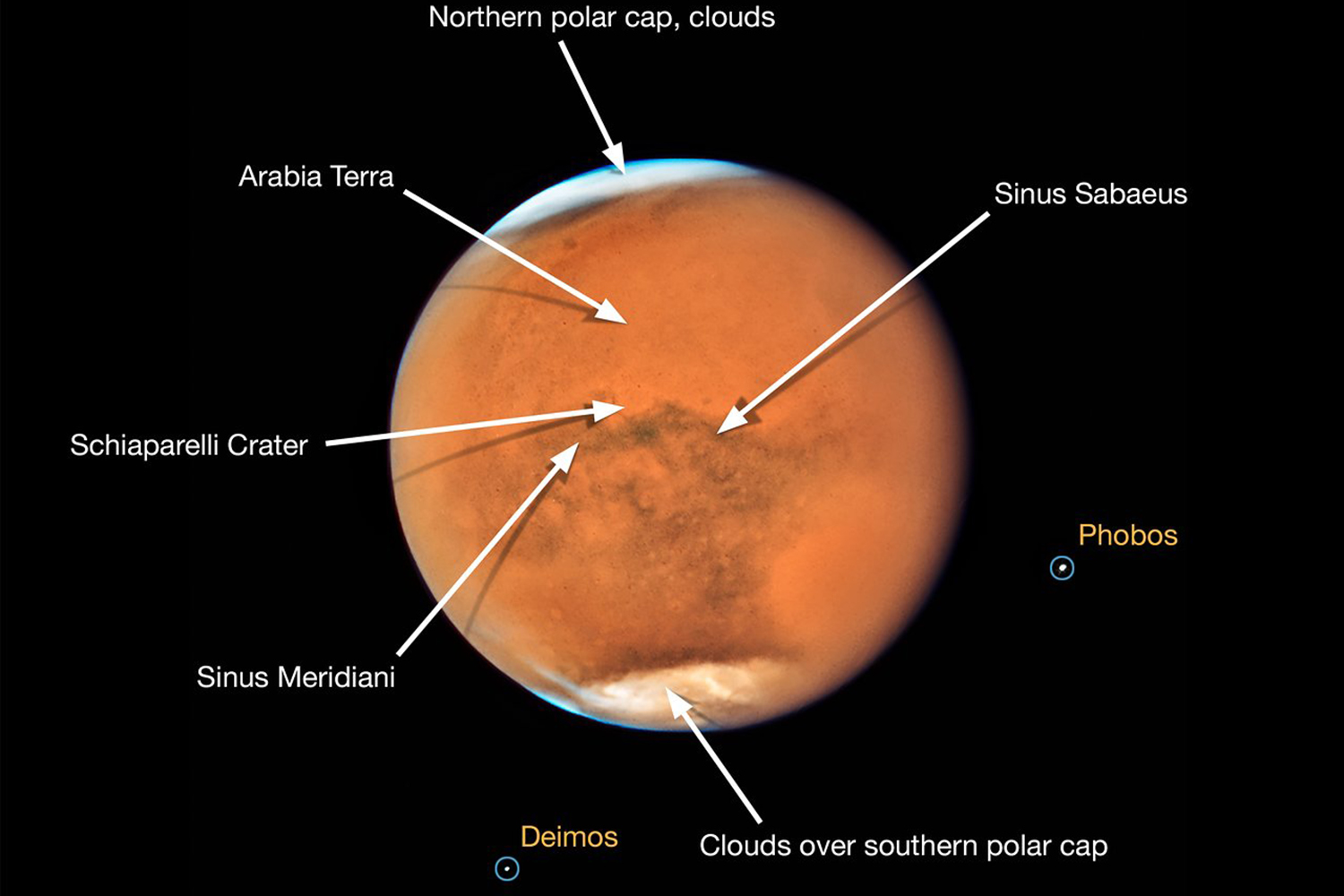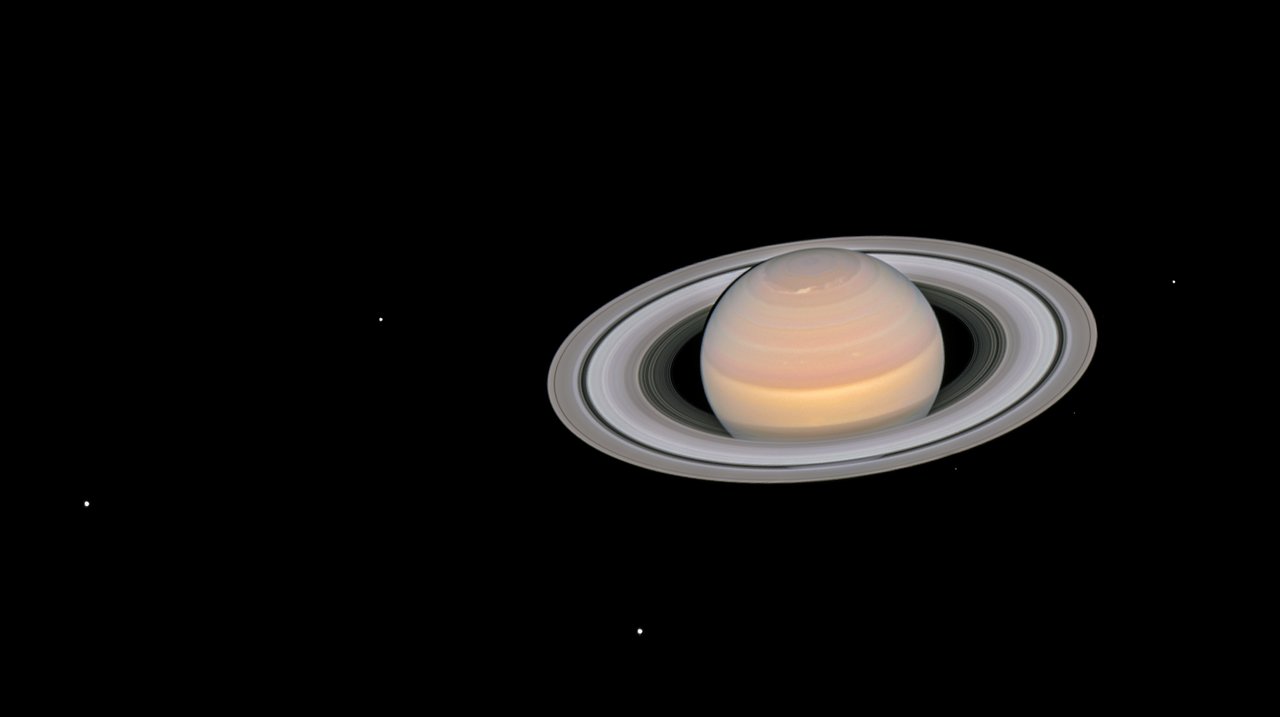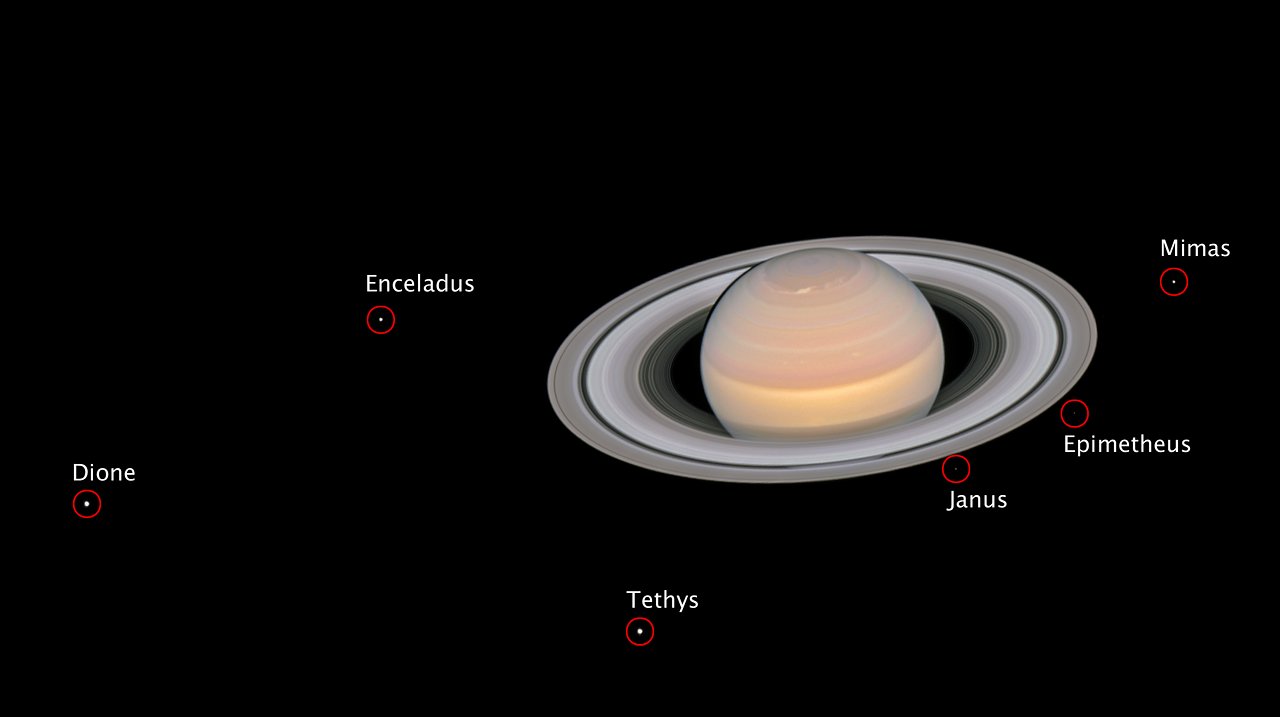For the past 28 years, the Hubble Space Telescope has captured some of the most iconic images of outer space. Now, as Mars and Saturn swing by Earth this summer, the legendary telescope has snapped a handful of beautiful images to add to the collection.
Although millions of miles away from Earth, the orbits of Mars and Saturn brought the planets relatively close this summer. Known as “opposition” — because we see the planets rise in the east as the sun sets in the west — this event gave astronomers a unique chance to capture detailed images of the planets, thanks to their proximity and full illumination from the sun.
Saturn orbited some 870 million miles away, while in opposition to Earth on June 27. A few weeks earlier, Hubble captured images of the planet’s six moons — Dione, Enceladus, Tethys, Janus, Epimetheus, and Mimas — appearing like specs in the sky. At the ringed-planet’s north pole, Hubble identified a hexagonal pattern first spotted 37 years ago during a flyby from Voyager 1.

Just under two weeks before Mars reaches it’s closest approach to Earth in 15 years (around 36 million miles on July 27), Hubble captured a dense and massive dust storm enshrouding the red planet. The persistent storm has lasted for more than four months, which has caused trouble for the solar-powered Mars Opportunity rover. During the storm, NASA has been unable to connect with the rover. The image above shows just how dense the storm is.
“Since the NASA/European Space Agancy Hubble Space Telescope was launched, its goal has always been to study not only distant astronomical objects, but also the planets within our solar system,” the space agencies wrote in a statement. “Hubble’s high-resolution images of our planetary neighbors can only be surpassed by pictures taken from spacecraft that actually visit these bodies. However, Hubble has one advantage over space probes: It can look at these objects periodically and observe them over much longer periods than any passing probe could.”
Hubble has proven to be a workhorse during it’s nearly three decades in operation, while it’s successor, the James Webb Space Telescope, is fraught with delays and carries a hefty $9.66 billion price tag. NASA recently announced the telescope won’t be ready until at least March 30, 2021.
Editors' Recommendations
- Hubble snaps an image of dark spokes in Saturn’s rings
- It’s been 2 years since the Perseverance rover landed on Mars
- It’s been 25 years since the first NASA rover landed on Mars
- NASA has wonderful news for its plucky Mars helicopter
- All the things the Perseverance rover has achieved in its first year on Mars







